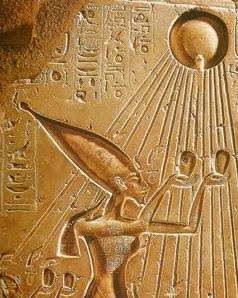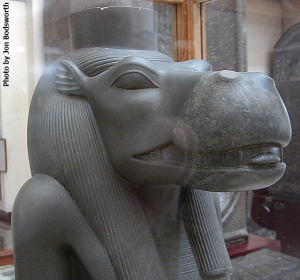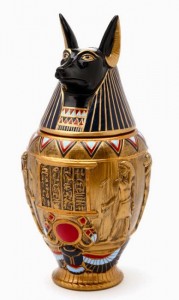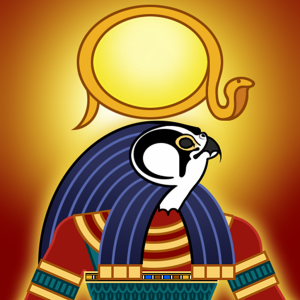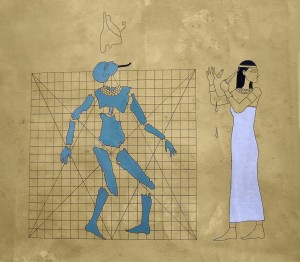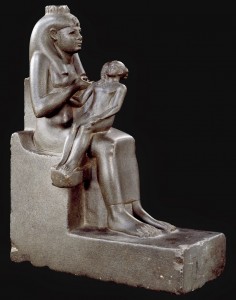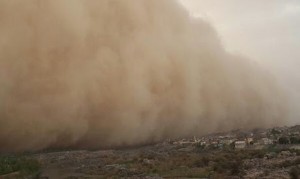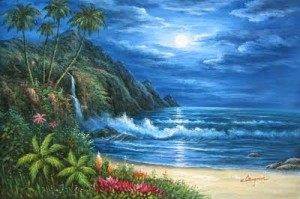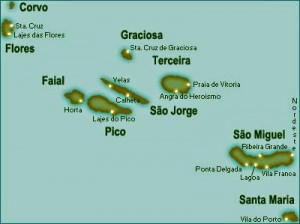(I hate that I have to say this, but this is a fictional account of the history of a fictional world. I do not believe these things, nor should you, as I am making them up. If I receive any comments that I did not do my research into these events, you will be mocked.)
In the Agent of Argyre series of books, there is an organization called the Alter Control Task Force. Though ostensibly an organization for policing activities of the Alter race, an attempt to prevent an eventual race war, they are actually representatives of a city-state on the ocean: The Republic of Argyre.
The Republic of Argyre, an artificial island anchored to an oceanic ridge in the pacific, is a city-state established by Alters for the sake of harboring their kind and establishing a relationship with the mainstream human population. Despite being an artificial island and attached to no primary landmass, the city’s structure is capable of potentially supporting all 12 to 15 million active Alters on the planet.
How did a race of people who’ve lived in hiding for centuries manage to construct such a city? Why would they build their city in the middle of the ocean? Where did they get the resources for such a task? In the Alterpedia Historia, we will answer these questions and discover the history of the Alters. Today we address…
The “First Ones”
In the history of the human race there have been genetic abnormalities which could create inhuman effects. Scaled skin, deformed bones, vestigial tails and strange growths have been marked throughout the history of mankind. These traits are often seen as peculiarities, unusual quirks in the gene pool which are often found to be rare and recessive in the genome. However, under the right circumstances, these traits have combined to form what is known as the Alter race.
The origins of the A-Type stem-cell which makes these traits dominant in Alters is unknown. What is known is that it has existed in a dormant state within latent Alters since before the dawn of what we consider human civilization. The first recorded instances of “superhuman” traits were found on the African continent. This is to be expected, as human beings originated in Africa, so too did their genetic history. To the people of Argyre, these earliest Alters are known simply as “the First Ones”.
The First Ones were primitive metamorphs, shape-shifters who had limited control of their form. In fact, while many modern shape-shifters can influence their change through concentration or emotional state, the First Ones’ form was determined primarily through external stimuli. Their skin would harden against physical threat, would adapt to retain moisture in a desert, or become more suited towards humid climates to avoid potential rot. They were the most successful nomads of early human development and often traveled in small groups or as leaders of larger nomadic tribes. It was not until normal humans began to form settlements that their true potential was discovered.
After generations, customs began to form among the First Ones. Realizing their bodies responded to what they were exposed to, a culture of alchemy, body modification and ritual grooming allowed the First Ones to begin crafting permanent or semi-permanent alterations to their form. The most common modification among these people was the adoption of animal-like appearance for the sake of invoking the cultural symbolism tied to these creatures. Over the years, the most notable of these modifications were to take the appearance of:
Hippos
Jackals
And Birds of Prey
These people became quite influential in the land slowly becoming known as Egypt, and the ones who rose to prominence were soon thought of as gods by common man. The assumption was easy to understand – after centuries of experimentation the First Ones had given themselves immense strength, stamina and longevity. Some were known to be able to lift large boulders. Others could go days without food or water and many seemed to survive time itself. The number of seemingly immortal and invincible people was growing and a religion began to form around these god-like kings and queens.
And then one of them betrayed his brother.
Osiris, the heir of the throne to the ancient dynasty established by the First Ones, ruled the known world (as far as they had known it). However, Osiris’ brother Set, being the younger son, was passed over for any responsibility or authority in the kingdom. Though content with living in his brother’s shadow for what could be considered one lifetime, the longevity of their people meant that Set lived in that shadow for centuries on end. It was only a matter of time before Set decided that waiting for his brother’s death wasn’t going to be enough, he had to make sure of it himself. This was no easy task: Osiris was particularly well adapted and had made himself immune to almost all forms of poison or trauma. Set had to do more than simply stab his brother in the back to remove him from power, he dismembered him in savage rage.
Though there were murmurs that only a First One could have possibly mauled Osiris in such a fashion, no one was comfortable with the idea that one of their own could have done such a thing. It was the first known case of a First One killing another as many were either isolated nomads or part of a larger family structure. Unwilling to believe that a family member could have possibly done this to their kin, the ruling caste of the First Ones agreed to allow Set to ascend to his brother’s throne as he had no known heir. The only one of the ruling caste to believe in Set’s guilt was Osiris’ wife Isis, who soon fled the lands and took to hiding in the marshlands around the Nile Delta.
Isis fled for two reasons. The first was that she believed Set would soon try to use her to solidify the legitimacy of his throne, taking his brother’s queen as his own. The second reason was that she knew what no other member of the ruling caste knew: Osiris was soon going to have an heir after all. The problem with this was clear – if Set were to discover this, he would certainly kill her and the child to ensure that he maintained his position. Only by hiding at the far end of the kingdom, near the ocean, did Isis think there was any chance for her to raise the child that could one day take his father’s throne. So it was there, in secret, that Horus was born.
Often depicted in adult form, Horus’ childhood is overlooked in the mythology that formed around it, sometimes skipped entirely with claims he formed “whole”. The truth was far less elegant, with a lifetime of being taught and trained by his mother and her accomplices in every field necessary for a king (particularly one who had to retake the throne). In essence, Horus wasn’t so much raised as he was honed like a weapon. He was to rise up in his father’s place and cast out his uncle by any means necessary. Because of this, while Ra is often depicted with much the same, the records in the Argyrean Archives suggest that Horus was the first to modify himself to look like a bird of prey as a symbol of his quest.
Luckily for Horus, nature was helping bring down Set as well. Through much of the reign of the First Ones in the land known today as Egypt, the region was a lush, green environment which was easy for people to thrive in. However, the Sahara region began to undergo desertification as the monsoon climate shifted south, slowly turning a green land into the greatest wasteland on Earth. Thus, at the beginning of Set’s reign, a prolonged severe drought overcame the land and quickly associated Set with the desert, wastelands and drought itself.
With pressure building on increasingly limited water supplies, Set’s reign was marked with internal strife throughout the kingdom established by the First Ones. Settlements throughout the region began to form factions and fight over limited resources. These isolated conflicts never grew to complete civil war, but the people quickly became unhappy with their ruler and identified him as the cause of their growing troubles. By the time Horus returned to his parent’s homeland, the people had begun to identify Set as the embodiment of chaos itself.
Horus began a movement to overthrow his uncle. According to the mythology, there were many contests between the two, but the truth was that it was a single conflict lasting for generations. Horus and Set’s power struggle lasted for nearly a century, resulting in great losses and leaving a lasting impact on the people of the region. It was understood, at least by the common man, that Horus was the true heir and that Set’s rule was the reason for their suffering. Because of this, the growing support for Horus began to sway the First Ones, who to that point had been unwilling to admit Set’s guilt. Realizing there was a need for their intervention, the First Ones set forth a final challenge: find water for the people.
The mythology has long said that this final challenge was actually to sail a boat of earth down the Nile. However, the truth is that both Set and Horus saw the same solution to a growing problem: it was unwise to try to bring water to the people, so they needed to bring people to the water. Set’s solution was a large, cumbersome ship, larger than any other built to that date. Placing as many people as he could on the great craft, many onlookers described it as though Set had cut off the top of a mountain and placed it into the water. After a short time, however, the massive vessel began to break and sink upon meeting the rougher waters of the Mediterranean Sea.
Horus, however, had a different approach to take. Realizing that it was a foolish task to try to move entire villages without a destination, Horus instead built smaller craft to explore the ocean. These craft, built to last as long on their own as possible, included small gardens for growing food and ancient rudimentary contraptions for purifying water (that were not nearly as effective as Horus had hoped). From the land, these craft looked like small islands on the water, and soon they were sent out as a great expedition fleet. The hope was that one of them, traveling long enough, would find their way to a more promising land.
To the surprise of everyone, especially his Uncle Set, Horus’ scheme proved fruitful. The expedition fleet discovered several islands and distant shores which had more agreeable climates. Though Horus knew he could not relocate the whole of his people to these places, he did realize that building colonies in these other regions would allow them to relieve the suffering of the people via trade routes between allied territories. A period of rapid colonization began. Before long the territory of Horus’ ancient kingdom had expanded across many islands and the coasts of Africa, Europe and even the distant Americas. The trade between these regions and the expanded resources of the kingdom made it clear: Horus was the king the people needed.
However, despite ascending to the throne, Horus realized he could not rule from the same place his father did. The territory they were controlling was far larger in scope and the trade network required more direct observation. Sitting near the routes his ships had been taking to travel to the furthest lands, a small group of islands today known as the Azores became the perfect location for Horus’ seat of power.
Construction of the new capital, like everything else he had done, was unusual. Deciding he wanted to accommodate the coming and going of hundreds, even thousands, of ships, Horus decided he preferred his capital to be mostly on the ocean as well as a massive, stationary ship anchored within the narrowest strait of the Archipelago. Situated between the islands now known as Pico and Faial, Horus’ capital was of such scope and requiring such peculiar techniques that many remembered the folly of his Uncle Set. But, despite their misgivings, Horus’ city on the water was complete, anchored to the two neighboring islands and built to act as a hub for the entirety of Horus’ fleet.
Constructed primarily of wood, lime plaster and stonework, the city on the water required near constant attention to be maintained. However, the achievement did not go unnoticed by other ancient civilizations. Centuries later it would be described by many, often remarking on the circular nature of the water channels running through it and the rings of land which sat between these channels. The sheer scope of the construction led to people describing it with grand words which left the impression of the city being at the center of an entire lost continent. But in truth it was only Horus’ city, the largest thing constructed by human and Alter hands to that point – the first artificial island to exist in the world.
However, the city was not meant to last, nor was the kingdom. Despite Horus’ efforts there was little that could be done to fully stave off the environmental changes striking parts of his kingdom. And though he maintained the civilization for the rest of his long life, centuries longer than any normal human could live, as he passed his kingdom was not much longer for the world. As for the records of Horus’ kingdom’s existence: it was inevitable, due to many factors…
That some things were lost to translation.
(The Alterpedia, Alter Help and Alterpedia Historia are based on the world of my books, Agent of Argyre. Give them a read, see the future world that Horus’ people made possible.)



